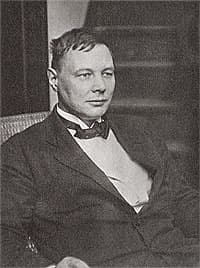Mikhail LARIONOV

Mikhail Feodorovich Larionov (b Tiraspol, Moldova, Russia, 3 June 1881 – d Fontenay-aux-Roses, France, 10 May 1964) studied from 1898–1908 at the Moscow Institute of Painting, Sculpture and Architecture, meeting artistic collaborator and partner Natalia Goncharova.
Larionov was one of the leading Futurists, exhibiting in all the leading avant-garde exhibitions in Russia, as well as many abroad, including Diaghilev’s Exposition de l’art russe at the Salon d’Automne, Paris, and with Der blaue Reiter (The Blue Rider group) in Munich (1912). He and Goncharova launched their Futurist-inspired Rayonnist style at the Target exhibition, Moscow (1913).
Before his move to Paris in 1916, Larionov (with Goncharova) had joined Diaghilev in Lausanne in 1915, becoming a close and frequent collaborator. Larionov became Diaghilev’s art consultant and occasional choreographer, and wrote several ballet scenarios. He was commissioned to design for Soleil de minuit (Midnight sun) (1915); the unrealised Histoires naturelles (1916); Contes russes (1917); Chout (1921); and finally Le Renard (1922).
As well as working with the Ballets Russes, Larionov worked on many other theatre projects: a series of sketches for the ballet Karagoz (Karaguez, gardien de l’honneur de son ami) staged by Adolph Bolm in Chicago in 1924 with Goncharova; The little Catherine at Antoine’s Theatre, Paris (1930); Symphonie classique (Classical symphony) at the Théâtre Pigalle; Sur le Borysthène (On the Dnieper) at the Grand Opera (1932). When de Basil reformed the Ballets Russes he commissioned Larionov to design for its production of Port Said (1936) at the London Coliseum.
Man Ray
Mikhail Larionov c 1925 gelatin silver photograph Man Ray Trust © Man Ray Trust/ADAGP. Licensed by Viscopy, 2010



